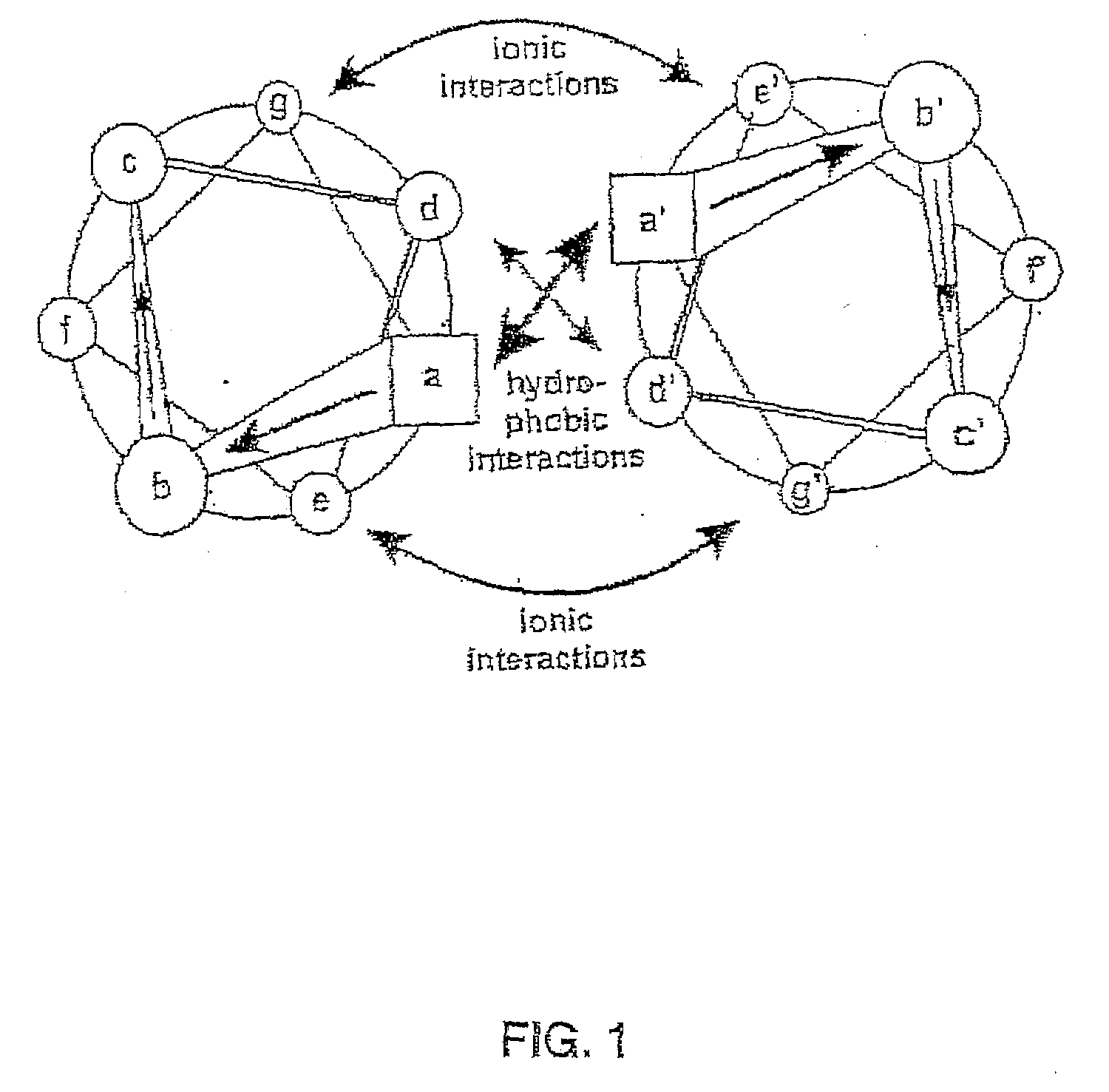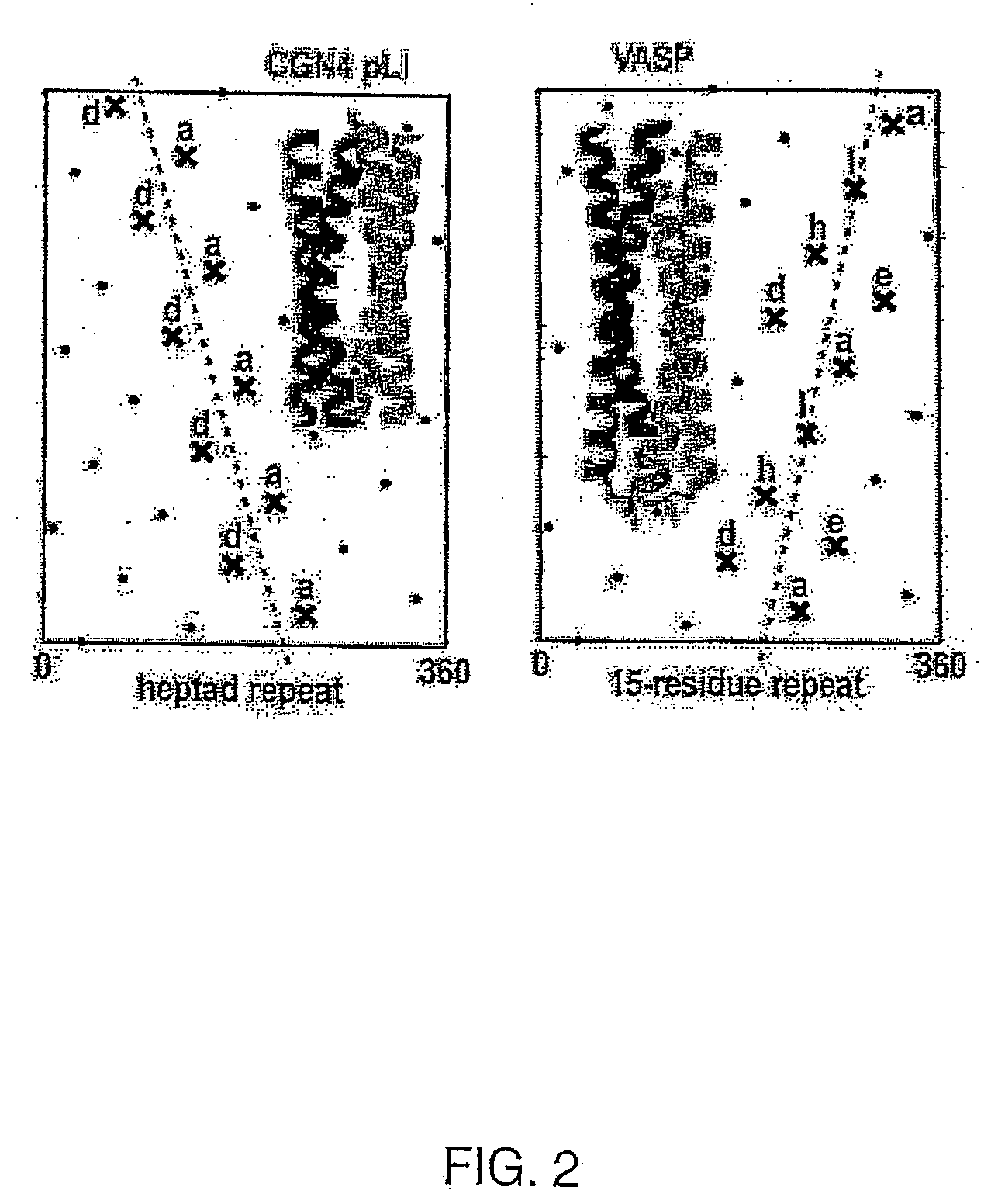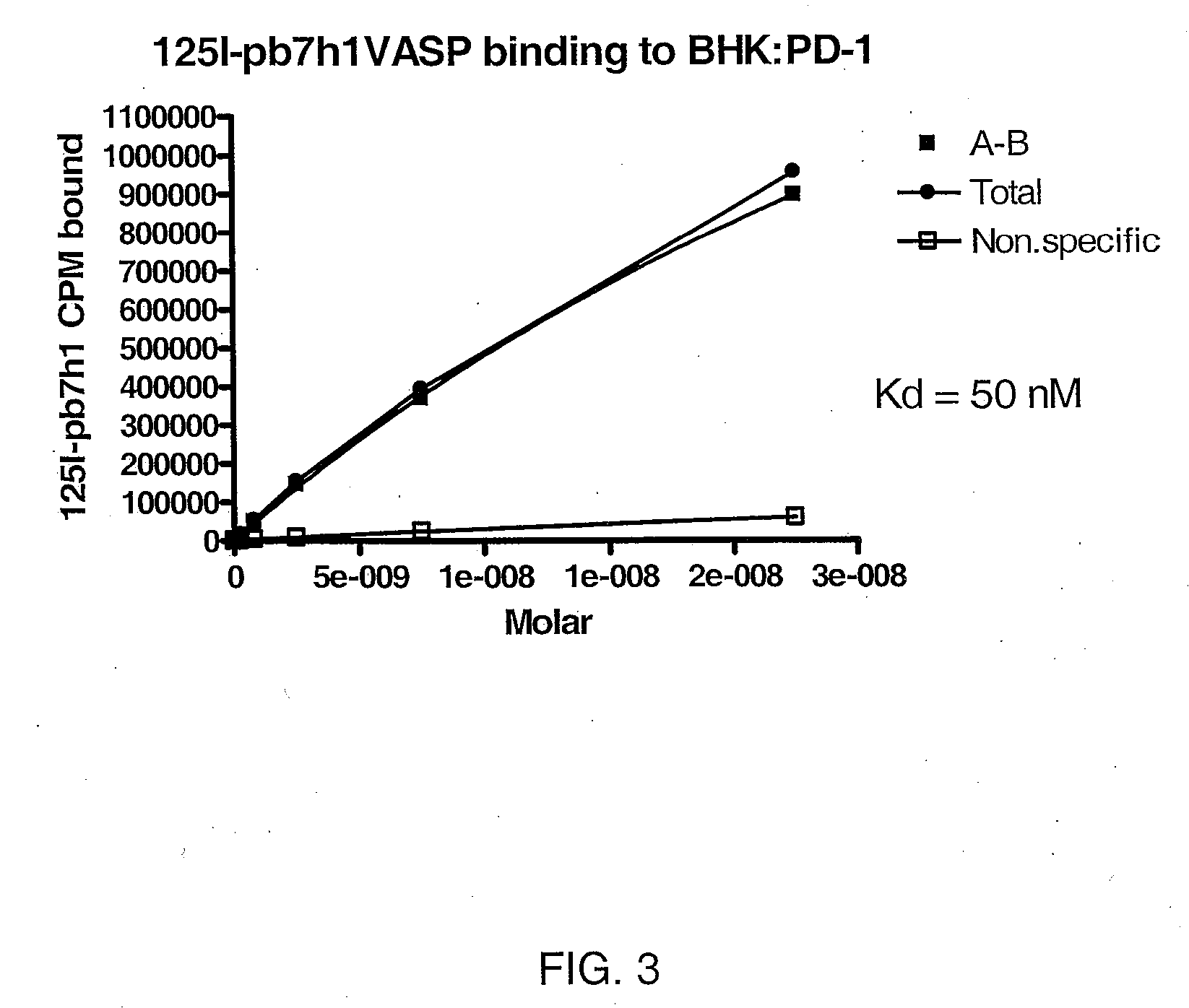Tetramerizing polypeptides and methods of use
a polypeptide and tetramer technology, applied in the field of polypeptides, can solve the problems of relative lack of effectiveness as compared to natural sequences, difficult use of model sequences, and sensitive proteolysis of novo designed sequences
- Summary
- Abstract
- Description
- Claims
- Application Information
AI Technical Summary
Benefits of technology
Problems solved by technology
Method used
Image
Examples
example 1
Cloning and Construction of VASP Expression Vector
[0088]Human vasodialator-activated phosphoprotein (VASP) is described by Kühnel, et al., (2004) Proc. Nat'l. Acad. Sci. 101: 17027. VASP nucleotide and amino acid sequences are provided as SEQ ID NOS. 1 and 2. Two overlapping oligonucleotides, which encoded both sense and antisense strands of the tetramerization domain of human VASP protein, were synthesized by solid phased synthesis: 5′ ACGCTTCCGT AGATCTGGTT CCGGAGGCTC CGGTGGCTCC GACCTACAGA GGGTGAAACA GGAGCTTCTG GAAGAGGTGA AGAAGGAATT GCAGAAGTGA AAG 3′ (zc50629, SEQ ID NO:3); 5′ AAGGCGCGCC TCTAGATCAG TGATGGTGAT GGTGATGGCC ACCGGAACCC CTCAGCTCCT GGACGAAGGC TTCAATGATT TCCTCTTTCA CTTTCTGCAA TTC 3′ (ZC 50630, SEQ ID NO:4). The oligonucleotides zc50629 and zc50630 were annealed at 55° C., and amplified by PCR with the olignucleotide primers zc50955 (5′ CTCAGCCAGG AAATCCATGC CGAGTTGAGA CGCTTCCGTA GATCTGG 3′) (SEQ ID NO:5) and zc50956 (5′ GGGGTGGGGT ACAACCCCAG AGCTGTTTTA AGGCGCGCCT CTAGATC 3...
example 2
Expression and Purification of B7H1VASP-HIS6
[0092]The pzmp21B7H1VASP-His6 vector was transfected into BHK570 cells using Lipofectamine 2000 according to manufacturer's protocol (Invitrogen, Carlsbad, Calif.) and the cultures were selected for transfectants resistance to 10 μM methotrexate. Resistant colonies were transferred to tissue culture dishes, expanded and analyzed for secretion of B7H1VASP-His6 by western blot analysis with Anti-His (C-terminal) Antibody (Invitrogen, Carlsbad, Calif.). The resulting cell line, BHK.B7H1VASP-His6.2, was expanded.
A) Purification of B7H1VASP-His6 from BHK Cells
[0093]The purification was performed at 4° C. About 2 L of conditioned media from BHK:B7H1VASP-His6.2 was concentrated to 0.2 L using Pellicon-2 5 k filters (Millipore, Bedford, Mass.), then buffer-exchanged tenfold with 20 mM NaPO4, 0.5M NaCl, 15 mM Imidazole, pH 7.5. The final 0.2L sample was passed-through a 0.2 mm filter (Millipore, Bedford, Mass.).
[0094]A Talon (BD Biosciences, San D...
example 3
Test of Binding Activity of”125I-VASP-B7H1 Fusion Protein to Cell Lines
A) Saturation Binding
[0098]25 mg of purified B7H1VASP-His6 was labeled with 2mCi 125, using IODO-TUBES (Pierce, Rockford, Ill.) according to manufacturer's instructions. This labeled protein was used to asses binding to transfected BHK 570 cells expressing PD-1, the ligand for B7H1 (ref), with untransfected BHK-570 cells as control. 1×105 cells were plated in 24 well dishes and cultured for two days. Concentrations of 125I-B7H1VASP-His6, from 22.5 nM to 10.3 pM, with or without 100 fold excess of unlabeled B7H1VASP-His6, was added to triplicate wells of cells. The binding reactions were incubated for one hour on ice, and then the cells were washed 3× with ice cold binding buffer. Bound proteins were extracted with 1 M NaOH and quantitated on the COBRAII Auto-gamma counter (Packard Instruments Co., Meriden, Conn.) Analysis of the binding was done using GraphPad, Prism 4 (GraphPad Software, Inc., San Diego, Calif.)...
PUM
| Property | Measurement | Unit |
|---|---|---|
| bed-volume | aaaaa | aaaaa |
| bed-volume | aaaaa | aaaaa |
| pH | aaaaa | aaaaa |
Abstract
Description
Claims
Application Information
 Login to View More
Login to View More - R&D
- Intellectual Property
- Life Sciences
- Materials
- Tech Scout
- Unparalleled Data Quality
- Higher Quality Content
- 60% Fewer Hallucinations
Browse by: Latest US Patents, China's latest patents, Technical Efficacy Thesaurus, Application Domain, Technology Topic, Popular Technical Reports.
© 2025 PatSnap. All rights reserved.Legal|Privacy policy|Modern Slavery Act Transparency Statement|Sitemap|About US| Contact US: help@patsnap.com



